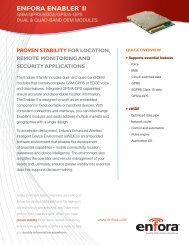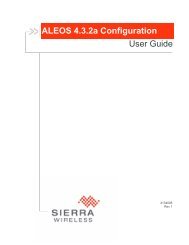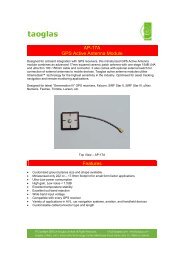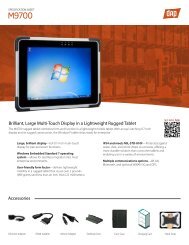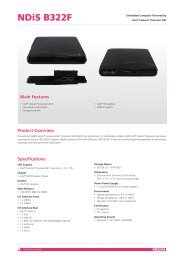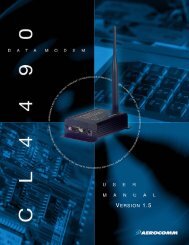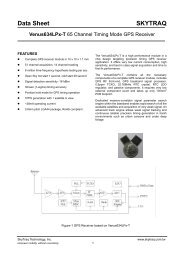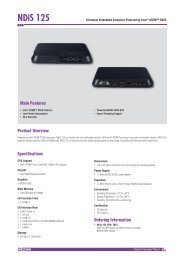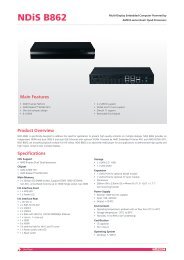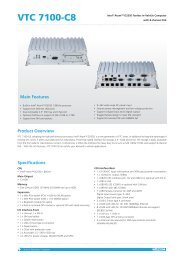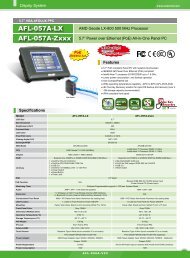Aerocomm AC4868.pdf - HEAnet Mirror Service
Aerocomm AC4868.pdf - HEAnet Mirror Service
Aerocomm AC4868.pdf - HEAnet Mirror Service
Create successful ePaper yourself
Turn your PDF publications into a flip-book with our unique Google optimized e-Paper software.
AT COMMANDS<br />
www.aerocomm.com<br />
CONFIGURING THE AC4868-250<br />
The AT Command mode implemented in the AC4868-250 creates a virtual version of the Command/Data pin. The<br />
“Enter AT Command Mode” Command asserts this virtual pin Low (to signify Command Mode) and the “Exit AT<br />
Command Mode” Command asserts this virtual pin High (to signify Data). Once this pin has been asserted Low, all<br />
On-the-Fly CC Commands documented in the manual are supported.<br />
On-the-Fly Control Commands<br />
The AC4868-250 transceiver contains static memory that holds many of the parameters that control the transceiver<br />
operation. Using the “CC” command set allows many of these parameters to be changed during system operation.<br />
Because the memory these commands affect is static, when the transceiver is reset, these parameters will revert back<br />
to the settings stored in the EEPROM. While in CC Command mode using pin 17 (Command/Data), the RF interface<br />
of the transceiver is still active. Therefore, it can receive packets from remote transceivers while in CC Command<br />
mode and forward these to the OEM Host.<br />
While in CC Command mode using AT Commands, the RF interface of the transceiver is active, but packets sent from<br />
other transceivers will not be received. The transceiver uses Interface Timeout/RF Packet Size to determine when a<br />
CC Command is complete. Therefore, there should be no delay between each character as it is sent from the OEM<br />
Host to the transceiver or the transceiver will not recognize the command. If the OEM Host has sent a CC Command<br />
to the transceiver and an RF packet is received by the transceiver, the transceiver will send the CC Command<br />
response to the OEM Host before sending the packet. However, if an RF packet is received before the Interface<br />
Timeout expires on a CC Command, the transceiver will send the packet to the OEM Host before sending the CC<br />
Command response.<br />
When an invalid command is sent, the radio scans the command to see if it has a valid command followed by bytes<br />
not associated with the command, in which case the radio discards the invalid bytes and accepts the command. In all<br />
other cases, the radio returns the first byte of the invalid command back to the user and discards the rest.<br />
19



